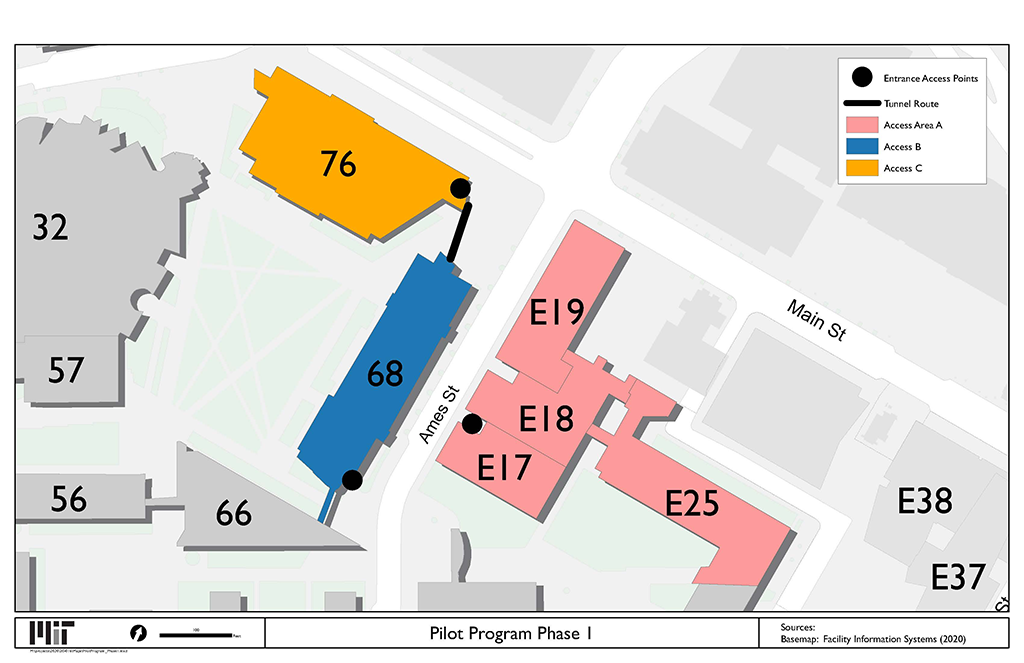Building access pilot for research ramp-up
Dear Colleagues,
On Monday, May 18, 2020, at 8:00 a.m., at the recommendation of the Research Ramp-up Lightning Committee, we will start a building access pilot for a few campus buildings used currently for approved research. This pilot is an initial step while we work toward plans for the eventual phased ramp-up of campus research activity.
The pilot involves only three buildings and includes only the designated personnel (currently authorized for access to those buildings in roles as researchers, technical staff in core facilities, and campus operational staff) listed in MIT’s current Limited Access Plan.
| Buildings in pilot | Single point of entry location |
|---|---|
| 68 | Ames St., south entrance |
| 76 | Corner of Ames St. and Main St. entrance |
| E17/18/19/25 sector-entry | 40 Ames St., Building E17 entrance |
Individuals authorized to work in these buildings/sectors will enter only through the single point of entry locations noted above. A check-in desk with MIT ID card reader at these entrances will confirm valid entry to proceed to locations within those buildings.
At the check-in desk, individuals will:
- Tap their MIT ID at the card reader; the reader and an MIT colleague greeter will confirm the individual is on the approved building access list.
- Demonstrate that they are wearing a face covering, as required by the Commonwealth of Massachusetts and the City of Cambridge. If the individual does not have a face covering at check-in, one will be provided to them.
The check-in desk will be staffed 24 hours a day, Monday-Friday, and could be expanded to weekends, if needed. During this pilot, all exit doors will remain functional, and there is no formal check-out process at this time. During hours when the check-in point is not staffed, building access will revert to the Limited Access Plan with swipe card entry at building doors.
Participation in this pilot is voluntary. However, individuals who want to access the participating buildings will be expected to check-in through the single point of entry, and practice frequent handwashing, practice physical distancing of at least six feet from others, and wear cloth face coverings, per local public health guidance.
The pilot will help us understand what is needed to implement a single-point-of-entry protocol for buildings as part of the phased ramp-up of campus. As we learn from this pilot, additional measures for the check-in process will be implemented to promote community health and safety and to comply with regulatory requirements. These will be communicated to you in advance of any planned implementation.
We will use what we learn from the pilot to determine the next steps and timing for expanding building access control to other campus buildings and the expansion of check-in requirements.
Thank you for your participation during this pilot, and thank you to IS&T and the faculty/staff working groups who helped develop this pilot as part of MIT’s Covid-19 response. If you have questions or feedback about this building access pilot process, you should contact building-access@mit.edu.
Sincerely,
Maria T. Zuber
Vice President for Research
